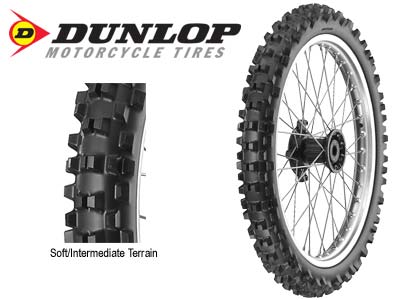While some bike owners have already stored their motorcycles away during winter months, others can keep riding. For both of them, Dunlop comes with a series of advices that are meant to guide motorcyclists through the winter season. The tire manufacturer encourages bikers to check their tires and has released various tips for that matter.
“For wet-weather riding it’s especially important to be aware that worn tires decrease the ability to dissipate water. Worn tires also decrease handling and become more susceptible to punctures, so always replace tires before they reach the tread-depth indicators inside the tread grooves,” said Dunlop Motorcycle Tires Product Manager, Mike Manning.
“On the sidewall of the tire, there are little triangles spaced around the tire. Looking in a tread groove at a point indicated by the triangle, you can see a raised-up bar. The surface of your tread must be higher than those bars,” Manning added.
A few other tips from Dunlop are listed below:
“For wet-weather riding it’s especially important to be aware that worn tires decrease the ability to dissipate water. Worn tires also decrease handling and become more susceptible to punctures, so always replace tires before they reach the tread-depth indicators inside the tread grooves,” said Dunlop Motorcycle Tires Product Manager, Mike Manning.
“On the sidewall of the tire, there are little triangles spaced around the tire. Looking in a tread groove at a point indicated by the triangle, you can see a raised-up bar. The surface of your tread must be higher than those bars,” Manning added.
A few other tips from Dunlop are listed below:
- On a regular basis, check your tires all the way around. Rotate both tires completely and make sure there are no nails, or other objects penetrating the tire. If you find anything, do not ride until you have your motorcycle dealer inspect the tire and replace it if necessary.
- Check the tire sidewalls for signs of cracking and never use sidewall treatments or dressings, which can actually accelerate tire cracking.
- Checking tire pressure is the most important tire maintenance function you can perform. Maintaining the correct air pressure is crucial to the tires’ rolling efficiency, steering, grip, wear and load-carrying capabilities—for every 4 psi a tire is underinflated, you could lose up to 80 pounds of load-carrying capacity.
- You’re not only riding on your tires, you’re also riding on the air within them, so check cold air pressure as often as possible with a high-quality air-pressure gauge, and have it calibrated at least once a year.
- If you’re storing your motorcycle for the winter and/or if you’re storing spare tires, try to avoid frequent and varied extremes of temperature during storage. Do not keep tires next to radiators or sources of heat. Tires subjected to these conditions will age more quickly than those stored in a cool, constant environment.
- Do not store tires where electric motors are present; the high concentration of ozone will accelerate tire cracking.
- When buying new tires make sure you select tires that can carry your expected load, including the total weight of the motorcycle, the rider(s), luggage and any equipment. Always match front and rear tires.
- After installation of new tires, check to make sure the arrows on the sidewall are pointing in the correct direction of rotation, and that the balance dot on the tire is lined up with the valve stem.
